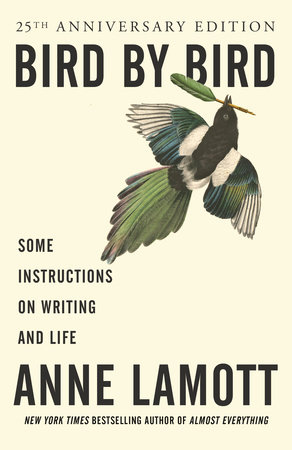Bird by Bird: Anne Lamott on Writing & Its Process
Allison Armijo // Blog Writer

From Stephen King’s On Writing: A Memoir of the Craft to Ray Bradbury’s Zen in the Art of Writing, authors, both new and old, have provided readers and fans with the opportunity to gain insight into the writing process. Anne Lamott’s Bird by Bird is no different, approaching the topic of writing as a conversation – a stream, or consciousness, with great potential for euphoria, therapy, and even humorous self-deprecation. However, what I found while reading Lamott’s novel that was different than say, King or Bradbury’s, was how informal it was. This is not to discredit Bird by Bird as unprofessional or lazy, but rather, celebrate to how Lamott uses her understanding of her audience, both being readers and – by extrapolation – writers, to make her message more impactful. Specifically, she approaches the topic of writing with sympathy more than anything else, as she understands the misconceptions and realities that come with pursuing a career as a writer, as well as the dangers of wanting this career for the wrong reasons.
By giving her audience insight into her personal experiences and failures, Lamott uses her writing as a vehicle for learning and self-exploration. She reveals the dichotomous relationship of self that every writer has to confront if they want to find meaning through their work; that is, how writing is an extremely intimate, vulnerable process that can also inflate your ego and leave you subject to crippling perfectionism. Lamott offers advice to combat perfectionism early on in her guide, telling any potential writers to isolate each voice of criticism, make those voices rats, and drop each rat in a jar and watch them scream (if you are feeling violent, you may shoot the rat, silencing it indefinitely). This is just one of many anecdotes Lamott uses to approach difficult, yet familiar, topics about the arduous life that a writer devotes themselves to.
The book is titled Bird by Bird to underscore the importance of approaching writing as a onestep-at-a-time process. Lamott argues that trying to simultaneously consume and communicate all of the information you want to write is overwhelming and leaves writers feeling helpless and burnt out on their journey towards articulation. While this advice may seem obvious, Lamott approaches the subject with the idea in mind that writers are prideful people; they can be blinded by the optimism of their own ideas and fall victim to the painfully unrealistic, yet romantic, idea of sitting down and voraciously typing out a story until it is complete.

Lamott also touches on the publishing side of writing and how, plainly-put, it isn’t all its cracked up to be. Although many writers view publishing as the pinnacle of their career, Lamott explains how this is not always the case (or at least, it shouldn’t be); and because of that, people should not pursue a career in writing if their only goal is to be published. She sympathizes with the appeal, but argues that, overall, the most rewarding part of writing is, well, writing. The act of putting pen to paper (or finger to keyboard, if you will) offers an inarticulable catharsis that is far more rewarding than any critical acclaim that print validation can bring. However, that perspective might seem saccharine and overly-sentimental, and Lamott acknowledges this. In fact, the beauty of Lamott’s approach to writing is that, above all, she understands how subjective the process is. She sees her advice as a vehicle of potentiality; it can help writers, it can hurt writers, it can do nothing for writers – and that is okay. There is not one way to write a novel or tell a story, and that is what makes writing such a self-indulgent, intimate process in itself.
Overall, Bird by Bird is not only an approachable application to the writing process, but it is also a love letter to writers and their wondrous spirit. Lamott memorializes authorship, comparing authors to children who built sandcastles, each time hoping, believing, praying, that the water will not dissolve their words; and even if the sandcastle falls, they are still confident the next one will defy all odds. In this way, Lamott recognizes the bravery and risk that comes with authorship; she understands that all writers, whether they acknowledge it or not, put themselves into their stories and impart those stories with the world to communicate their sight, their vision, their way of seeing beauty and darkness. This act is brave, it is commendable, and it’s pretty hard; that is why it is important to take it one word at a time, or rather, bird by bird.

